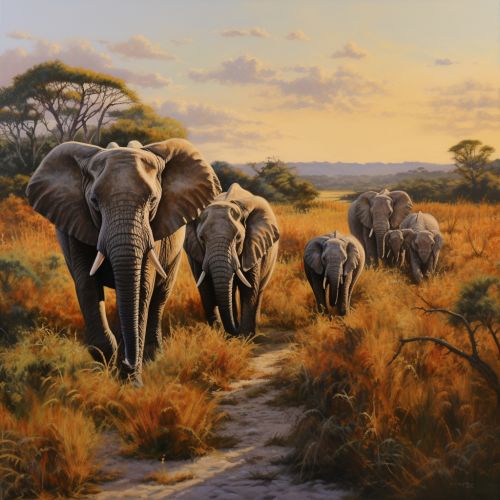Elephant Conservation
Introduction
Elephant conservation is a significant branch of conservation biology that is dedicated to the preservation and protection of the world's elephant population. Elephants, which belong to the family Elephantidae, are large mammals known for their distinctive long tusks, large ears, and a trunk that has various uses such as breathing, lifting water, and grasping objects. The two main species of elephants are the African elephant and the Asian elephant, both of which are threatened by habitat loss and poaching.


Elephant Biology and Behavior
Elephants are known for their complex social structures, intelligence, and long lifespan. They are herbivores, feeding on a variety of vegetation including grasses, leaves, and bark. Elephants are also known for their migratory behavior, often traveling long distances in search of food and water. This migratory behavior plays a crucial role in seed dispersal, contributing to the biodiversity of their habitats.
Threats to Elephant Populations
Elephants face numerous threats, the most significant of which are habitat loss and poaching. Habitat loss occurs due to deforestation and human encroachment, which leads to the fragmentation of elephant populations. Poaching, on the other hand, is driven by the illegal ivory trade, where elephant tusks are highly valued.
Conservation Efforts
Conservation efforts for elephants are multifaceted, involving both in-situ and ex-situ strategies. In-situ conservation involves protecting and managing elephant habitats, while ex-situ conservation involves the breeding of elephants in captivity. Legislation and international treaties also play a crucial role in elephant conservation, with laws and regulations in place to protect elephants and prohibit the ivory trade.
Impact of Conservation Efforts
Conservation efforts have had varying levels of success. Some elephant populations have stabilized or even increased due to effective conservation strategies. However, other populations continue to decline, highlighting the ongoing need for effective and sustainable conservation efforts.
Future of Elephant Conservation
The future of elephant conservation lies in the continued development and implementation of effective conservation strategies, as well as increased public awareness and involvement in conservation efforts. Technological advancements, such as the use of drones for monitoring elephant populations, also hold promise for the future of elephant conservation.
